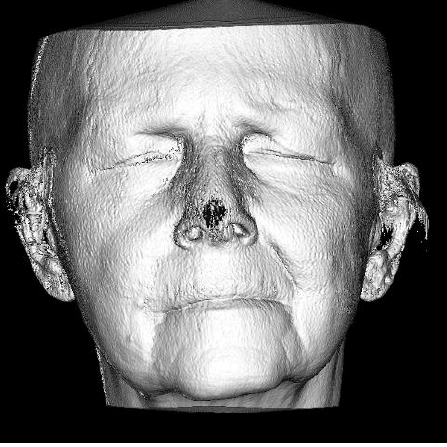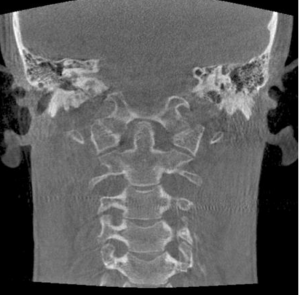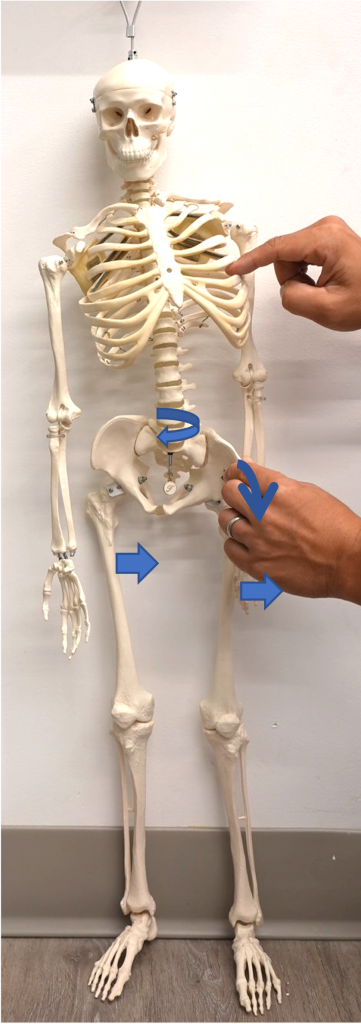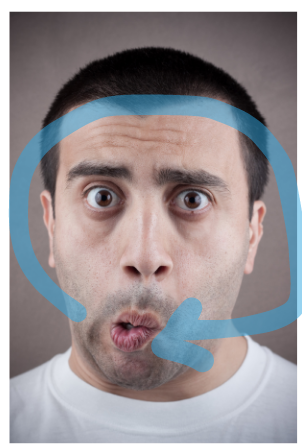Left cranial sidebend

Left cranial sidebend refers to a specific movement or position of the head and neck. In anatomical terms, the head is tilted or inclined towards the left side while keeping the chin level. This movement primarily occurs at the atlanto-occipital joint, which is the joint between the base of the skull (occipital bone) and the first cervical vertebra (atlas).
The atlanto-occipital joint allows for various movements of the head, including flexion, extension, rotation, and lateral bending. The left cranial sidebend involves a lateral bending of the head towards the left side, resulting in a tilting or inclining of the head to the left.

Left Cranial Sidebending

Left cranial sidebend pattern is the most common compensatory pattern from L AIC. If you look at someone’s face, a person with left cranial sidebend looks like the neck sidebend to the left and turned to the left. The jaw looks deviating to the left.
This is because the cascade of compensation from L AIC: R BC and R TMCC. This R TMCC pattern and muscular activities create the position of temporal bones which are externally rotated on the left and internally rotated on the right. This pulls the jaw (mandible) to the left.
The result of this creates a common facial presentation where:
- The left eye is drooping
- The left ear is more prominent from the front
- Chin deviates to the left
- Nose deviates to the left
- Left side of the face is “compressed or collapsed”, a counterclockwise face.
Right cranial torsion
Right cranial torsion refers to a specific type of rotational movement or positioning of the head and neck. It involves a twist or rotation of the head towards the right side, typically occurring at the atlanto-occipital joint and/or the upper cervical spine.
The atlanto-occipital joint, as mentioned earlier, is the joint between the base of the skull (occipital bone) and the first cervical vertebra (atlas). It allows for various movements, including rotation. Right cranial torsion involves a rotational movement where the head is twisted or rotated towards the right side.


As with every pattern in our human body, Left cranial sidebend and right cranial torsion do not just happen*. Every pattern is derived from Left AIC pattern. Right BC pattern and Right TMCC pattern are the portion of the Postural Restoration Institute (PRI) Left AIC and Right BC pattern from the neck to the cranium. As a result, your cranium (head) has also a compensatory pattern called left cranial sidebend pattern.
*exception of trauma to your head/neck.
Right Cranial Torsion

Right cranial torsion is a further compensation pattern from L AIC, R TMCC, and left cranial sidebend. It usually could involve sensory integration issues such as vision, hearing, and/or occlusion. Autonomic dysfunction also could be seen often. Anyway, right cranial torsion occurs for a lot of different reasons I cannot explains in an article.

The major difference between left cranial sidebend and right cranial torsion is that there is extra torque in the spheno-basilar junction. In left cranial sidebend, the sphenoid and occiput are rotated in the same direction (left sidebend). However, in right cranial torsion, the occiput is rotate to the other direction (left sidebend) while the sphenoid is in right sidebend (rotation).
With right cranial torsion, we tend to see in the face:
- A lower left eye
- Chin deviates to the right (a “clockwise face”)
- The left ear might be prominent but not always
Asymmetrical face

If you have an asymmetrical face, especially a counterclockwise face, it could be due to a compensatory normal pattern from left AIC. It does not mean you have issues in your system. Rather, it is a normal physiological pattern in the right stance phase especially if your occlusion and vision have no issue. You may need to train yourself on standing on the left side appropriately with PRI techniques.
However, if you have the following condition:
- a clockwise face
- your molar does not contact each other
- occlusion issues such as open bite, crossbite, crowded teeth
- vision has issues
- a typical cervical/cranial intervension is repeated to fail
You may want to see a qualified PRI practitioner to improve your entire body pattern.